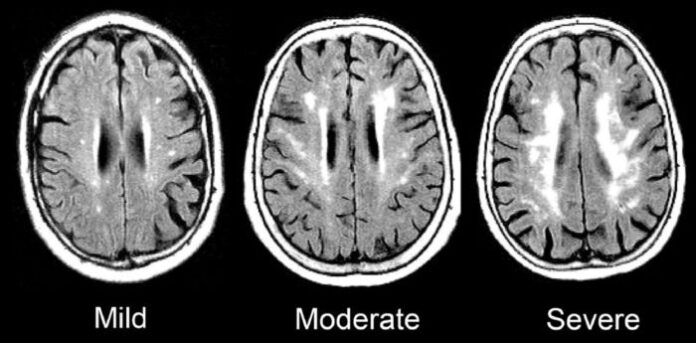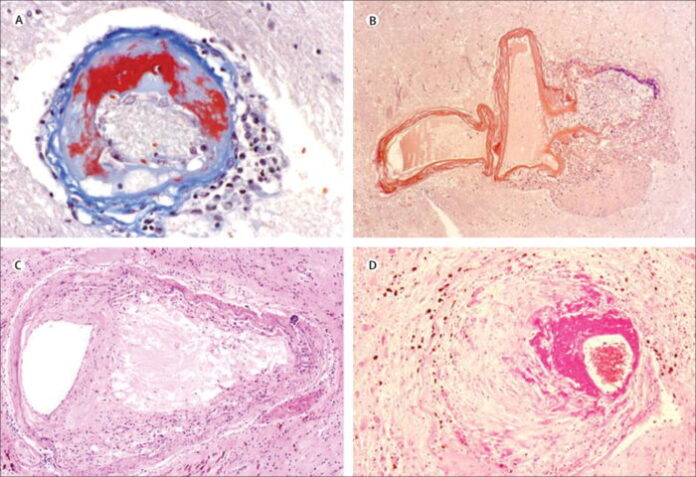Small vessel ischemic changes happen a lot with older people, but have you ever wondered what caused them?
On an MRI head scan, 95 percent of older people aged somewhere between 60 and 90 showed some signs of small vessels ischemic changes. That leads to a condition called cerebral small vessel disease, and people should be more informed about it, as it became one of the major health problems within the elderly community. Cognitive decline, problems with waling and/or balance, strokes, and vascular dementia are all connected to this ischemic changes, and they all lead to cerebral small vessels disease.
Cerebral Small Vessel Disease
There are other names for it, like small vessel ischemic disease, periventricular white matter changes, white matter changes, perivascular chronic ischemic white matter disease of aging, white matter hyperintensities, leukoaraiosis, and age-related white matter changes. Don’t try to memorize it all, but you should know the medical terms for it in case you ever come across it.
SVD or cerebral small vessel disease is a term which represents numerous abnormalities which are in connection with blood vessels found in the brain. The reason why somebody refers to it as white matter changes is because when shown on MRI, you can see the majority of brain tissue emerging.

Some medical research showed particular instances of cerebral SVD like lacunar infarct, which is a type of a small stroke, cerebral microbleed, which is the bleeding happening in the brain from a very tiny blood vein, and white matter hyperintensities, also known as a radiological finding. Atherosclerosis can cause cerebral SVD in some events. Atherosclerosis changes the smaller blood canals that support brain tissue, and in case you didn’t know, larger blood vessels can cause havoc to your organism, like inflammation, chronic damage and they can even store plaque. So you need to pay attention to both larger and smaller blood vessels.
When the brain isn’t receiving much oxygen, it can die, and chronic damage can cause such a thing. It can prevent the small blood vessel from reaching the brain, or it can cause it to leak into it, and that can damage some close by brain cells. When the brain cells aren’t receiving oxygen, that is medically called ischemia.
White matter changes are visible on the MRI when the brain gets damaged in such a way, and that means that signs of cerebral SVD are showing. They can be mild, moderate, or severe/extensive, as explained by the medical staff.
Symptoms
Depending on the level of damage, the symptoms can be different. Some can experience “silent” SVD, which means that there are no detectable symptoms. On the other hand, the other visible symptoms include cognitive impairment, difficulties with walking and stability, strokes, depression, vascular dementia, and other dementias, and there can even be a development to incapacity and even death.

Cognitive impairment
When Mini-Mental State Exams shows cerebral SVD associated with bad numbers, that means that your reasoning abilities are impaired and correlated with cerebral SVD, and you can experience a disease called vascular cognitive impairment.
Problems with walking and balance
White matter lesions are made in connection to motion disorder and problems with walking. According to a study performed in 2013, moderate or severe/extensive cerebral SVD was linked with a deterioration in motion and balance purpose.
Stroke
According to a 2010 meta-analysis white matter, hyperintensities were made in connection with the development in the chance of a stroke.
Depression
White matter changes are capable of causing depression within the elderly community, and they are great grantors to it.

Vascular dementia and other dementias
Cerebral SVD is made in connection with and enhanced risk or enhanced severity of vascular dementia and some other kinds of dementia, like Alzheimer’s disease.
Disability or death
According to a study from 2009, out of 639 74-year-old people with no impediments, 29.5% encountered severe white matter changes in a three-year period, and 15.1% underwent moderate white matter changes that caused severe disabilities and even death. 10.5% of mild white matter changes slowly transition to a disability and death.
What is creating all this?
Cerebral SVD is a big term, and it holds a variety of kinds and issues that are linked to a small blood vessel found in the brain.
What can cause it is:
- High cholesterol (dyslipidemia)
- Atrial fibrillation
- Hypertension
- Cerebral amyloid angiopathy
- Diabetes
- Age
- Smoking

How to treat and prevent?
May are still trying to see how exactly can a person treat or even prevent cerebral SVD. Some are still trying to see what is causing all of these diseases, but doctors and experts are more focusing on how to manage, pause, and restrict cerebral SDV.
Experts suggest that you should treat any underlying hazard factors, and try and see to locate the possibility of a stroke and then prevent it from happening.
Hypertension therapies are also included as a way of stopping the improvement of white matter changes within the older people, or anyone experiencing it, but when it comes to treating hypertension, or high blood pressure, it can be tricky sometimes. It can slow the progress, but on the other hand, those type of treatments haven’t shown much progress in 80-year-old people experienced the symptoms. People who have severe cerebral SVD also find treatment less effective.
Before you hit that 80th mark, you should already be familiar with the possibility of having a cerebral SVD, and by that time you should undergo any treatment that has to do with managing your high blood pressure.

MRI?
MRI is given to older people experiencing worrisome clinical symptoms and when doctors and experts need to see what is in the person’s brain in order to prescribe and decide what kind of treatment they should give to the patient.
The doctors from nationalmriscan.com tell us that an MRI can tell if you are experiencing some high blood pressure, problems with walking and balance, and if you have memory and thinking problems, but when it comes to cognitive impairment, an MRI can tell you if you have cerebral SVD or Alzheimer’s disease.
To conclude, MRI might not be the best idea, but if you decide to do it anyway, you should further investigate the MRI findings in order to see what exactly are you experiencing, is it cerebral SVD or maybe some other disease.





![Calgary’s Hottest Neighborhoods for Luxury Homebuyers [2024]](https://thewashingtonote.com/wp-content/uploads/2024/04/Calgary-324x160.png)



